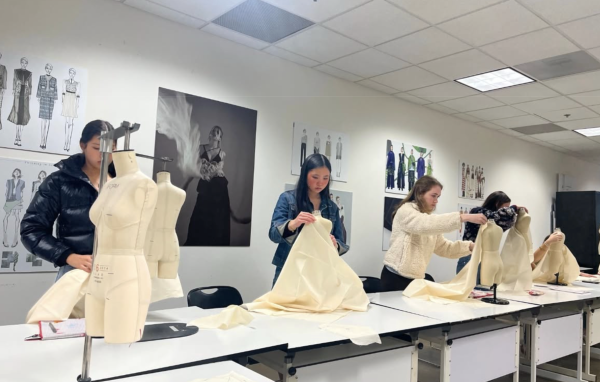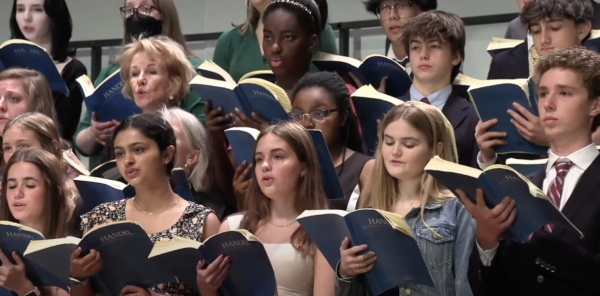Residency strengthens Pamela Martinez’s art skills and knowledge
“It was hot, hot, hot, hot, hot. It was so hot,” said Upper School art teacher Pamela Martinez about Orvieto, Italy, a city about an hour and a half outside Rome, where her residency was located. While Martinez had previously done a residency last summer in Spain, she defined it as a traditional residency. That residency gave her an opportunity to make her work in a foreign country, which provided her with new inspiration, but this year she wanted something different. She was looking for a residency which was more “robust.” During her residency, she took courses about each different element of art including theological aesthetics and history before working in the studio in the afternoons.
“If I could equate it to anything, it’s like running through history for professional artists,” said Martinez. Similarly to Running Through History, a travel-based class here at Westminster, her residency was spent learning about art history and its influences, followed by working in the studio with the professors and peers she was surrounded by. After class time during the day, she had homework each night and then worked with the professors to develop their artwork.
The residency was in Italy because Italy was a prominent location in the development of Western art. The three main denominations of Christianity were centered near Italy, and these had great influence on modern art. The ancient pieces of artwork commissioned by the church help to give inspiration for Martinez’s paintings and light installations.
“You get up, you go to class for a couple of hours, you are listening to lectures about art history and theology and the context of the social thought during each time period,” said Martinez. This atypical approach to the residency allowed Martinez to obtain much-needed context and inspiration for her painting and art installations.
“There were thirteen artists, there were dancers, filmmakers, graphic designers, painters like myself, and philosophers and theologians.” Being around these various types of artists gave Martinez inspiration to venture off from painting, and for the first time, she worked with light installations.
“I took found materials that were in the studio, and then I assembled them, so I made small sculptures, and then projecting light on them which projected shadows onto the wall,” said Martinez. Not only did she work with new materials, but her peers gave her encouragement to express her Christian ideals in her artwork.
“We had a lot of context about social context, theological context, historical context, art historical context so that when we go to travel to that space we knew exactly what was going on and what everybody thought about it,” said Martinez. Understanding the context behind what she was seeing at the prominent sites in art history gave Martinez a better appreciation and awareness for the influences of her faith, Christianity, in the art world.
“It was very special to me to be in a place in with a bunch of Christian artists, so I grew in that when I’m normally at home, I don’t talk about God,” said Martinez. Being surrounded by fellow Christian artists in Italy , Martinez grew in that she was able to express her devotion to her faith in an art world where doing so is outside the norm. She was able to have helpful conversations about faith and religion in the art world with the fellow artists, without worrying about how it would be received in the predominantly secular art world.
“It was really great to be around other people that were like minded and to be able to have those conversations and not ever think about is this going to be controversial, is this going to be offensive,” said Martinez. It felt easier for Martinez to express her thoughts in her artwork during the residency. With her revitalized ability to convey her ideas, Martinez hopes to find a way to share her new knowledge with her students, but her work in Italy is so specific, she has found it difficult to connect it to the work in the classroom.
“I don’t know yet, I don’t know if I can because it is so specific to the work that I do in the studio,” said Martinez when discussing how she will bring what she took from her residency back to the classroom. In Italy, she was specifically working with her own paintings and light installations, which does not directly apply to the curriculum in the classes she teaches, but the skills she learned about expressing her ideas will be influential to the young artists at Westminster.
“My work is about the holy spirit and it is religious in context, and I don’t teach that in my work at Westminster,” said Martinez. While Martinez will not teach the specifics from her residency to her students, the skills she learned about expressing herself in her artwork and using historical, social, and theological context to help inspire her pieces will stick with her, and she will pass them down to her students.
As the school year comes into full swing, Martinez aims to share what she learned from her transformative summer residency in Italy with her students. During the residency, she gained confidence in her ability to express herself in her artwork and learned about the diverse skills, history, and culture associated with art. With her new knowledge and abilities, Martinez will be able to better serve as a mentor to the aspiring artists in the Westminster community.



